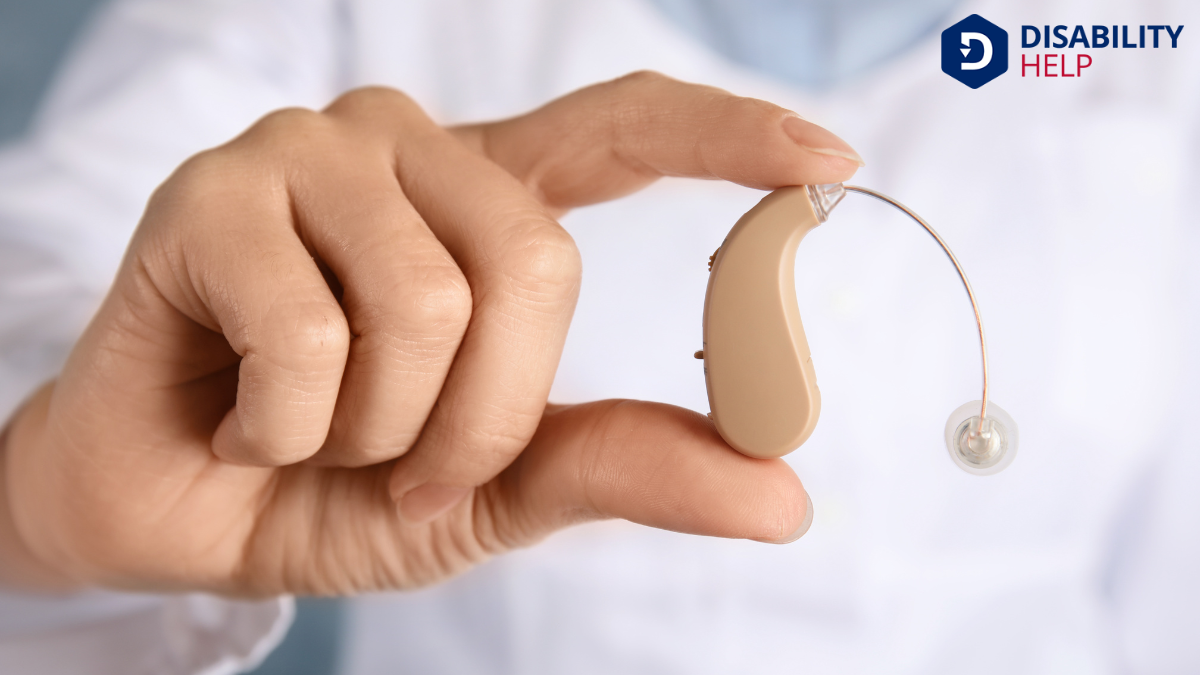Let's explore what falls under assistive technology and how it impacts lives. We often encounter various devices like communication aids, mobility tools, and sensory enhancements, each serving unique needs. But there's more than meets the eye. From cognitive support systems to educational tools, assistive technology covers a broad spectrum. It's fascinating how these innovations enhance independence and participation. Curious about which technologies are shaping the future? Let's dive deeper.
Key Takeaways
- Assistive technology includes devices for enhanced mobility, such as wheelchairs, scooters, and walkers.
- It encompasses communication aids like speech-generating devices and text-to-speech applications for improved interaction.
- Sensory enhancement tools, such as hearing aids and visual aids, fall under assistive technology.
- Cognitive support technologies, including memory enhancement tools and task management apps, are part of assistive technology.
- Educational assistive tools, such as text-to-speech software and interactive whiteboards, support diverse learning needs.
Understanding Assistive Technology
While many of us might take everyday tasks for granted, assistive technology plays an essential role in leveling the playing field for individuals with disabilities.
We need to understand that it encompasses a wide range of devices and tools designed to enhance the abilities of people facing physical or cognitive challenges. From wheelchairs that provide mobility to screen readers that help us access digital content, these technologies empower users to live more independently and participate fully in society.
Let’s remember that assistive technology isn’t just about high-tech gadgets. Sometimes, simple solutions like grab barsBars installed in bathrooms or other areas to provide support and prevent falls for those with mobil... or specialized kitchen utensils can make a significant difference.
Communication Aids

Communication aids are essential tools that bridge the gap for individuals with speech and language challenges, enabling them to express their thoughts and needs.
These aids come in various forms, from simple picture boards to advanced speech-generating devices. For many, they serve as a voice when words are difficult to articulate.
We might know someone who uses text-to-speech apps on tablets or specialized communication software on computers. These solutions guarantee that everyone, regardless of their ability to speak, can participate in conversations and share their ideas.
Mobility Devices
Just as communication aids open doors for those with speech challenges, mobility devices provide newfound freedom for individuals facing physical movement difficulties.
These devices, ranging from canes and walkers to wheelchairs and scooters, help us move more easily in our daily lives. They empower us to participate in activities we might otherwise miss and navigate environments that can seem intimidating.
Mobility devices also enhance our independence. Imagine the difference a wheelchair makes for someone who struggles to walk long distances.
It opens up a world of possibilities, allowing us to engage in social activities, pursue career opportunities, and live life on our terms.
Sensory Enhancement Tools
As we explore sensory enhancement tools, let's focus on how visual aid devices, hearing assistance tools, and tactile feedback solutions can substantially improve daily experiences.
These technologies offer not just support but empowermentThe process of gaining control, authority, and power over one’s life, often used in the context of... for those with sensory challenges. Together, we'll uncover how these tools enhance our interaction with the world around us.
Visual Aid Devices
Visual aid devices, an essential component of sensory enhancement tools, play an important role in improving the quality of life for individuals with visual impairments.
These devices help us see the world in ways we might otherwise miss. From simple magnifiers to advanced electronic readers, each tool brings its unique benefits. For instance, screen readers convert text to speech, making digital content accessible. Meanwhile, electronic magnifiers enlarge text and images, providing clarity for those with low vision.
We can also use wearable technology, like smart glasses, which offer real-time information and assistance.
These innovations guarantee that everyone can engage with their surroundings more fully. Let's embrace these advancements, understanding that they empower not just individuals but communities, fostering inclusivity and independence.
Hearing Assistance Tools
While hearing impairmentA loss or abnormality of a body structure or function, whether physical, mental, or sensory, often a... can pose significant challenges, hearing assistance tools offer transformative solutions, enhancing how we experience sound. These tools, ranging from traditional hearing aids to advanced personal amplifiers, help us reconnect with the auditory world.
Hearing aids, for instance, are designed to amplify sound, making conversations clearer and more vibrant. They’re small, discreet, and packed with technology that adapts to different listening environments.
For those of us needing a bit more, personal amplifiers provide a boost in sound beyond standard hearing aids, ideal for settings like lectures or social gatherings.
Other tools, like assistive listening devices, bridge the gap in public spaces, using wireless transmission to deliver sound directly to our ears. Together, these devices open up a world of auditory possibilities.
Tactile Feedback Solutions
Imagine a world where feeling is believing, and tactile feedback solutions bring this concept to life. These sensory enhancement tools offer us a new way to interact with our surroundings, especially for those with visual impairments or sensory processing challenges.
By converting digital information into physical sensations, they enable us to "feel" data through vibrations or pressure.
Think about how a smartphone's vibration alerts us to notifications. Tactile feedback devices work similarly but with greater complexity and purpose. They can guide us through tasks, alert us to hazards, or help us communicate.
As we explore these solutions, we begin to appreciate their potential to enhance independence and accessibilityThe design of products, devices, services, or environments to be usable by people with disabilities.... for all. Let’s embrace this technology to create a more inclusive world.
Cognitive Support Technologies

As we explore cognitive support technologies, we'll focus on tools designed to enhance memory and improve task management.
Memory enhancement tools help us retain important information, while task management apps keep us organized and efficient.
Together, these technologies empower us to handle daily challenges with greater ease and confidence.
Memory Enhancement Tools
Memory enhancement tools, an essential branch of cognitive support technologies, are transforming the way we manage and improve our cognitive functions. They offer us innovative methods to strengthen our memory, benefiting individuals with memory impairments or those simply looking to sharpen their cognitive skills.
From digital tools like mind-mapping software to mnemonic devices, these technologies help us retain and recall information more effectively. We might use digital notebooks to record important details or employ spaced repetition apps to reinforce learning.
These tools cater to diverse needs, providing personalized strategies to boost memory retention. By integrating these aids into our daily lives, we’re not just enhancing our memory; we’re also fostering independence and confidence in handling everyday tasks and challenges.
Task Management Apps
While balancing our daily responsibilities can be challenging, task management apps offer a streamlined way to organize and prioritize our activities. These apps provide us with tools to break down complex tasks into manageable steps, set reminders, and track progress. By doing so, they help us stay focused and reduce the overwhelming feeling that often accompanies a long to-do list.
We can customize these apps to fit our specific needs, whether it's for work, school, or personal projects. Features like calendar integration, deadline notifications, and collaboration options make them versatile and user-friendly.
Embracing these digital assistants not only boosts productivity but also supports our cognitive well-being by minimizing stress and enhancing our time management skills. Let’s explore these apps and enhance our daily efficiency together.
Adaptive Computer Software
Adaptive computer software revolutionizes the way we interact with technology, making it more inclusive for individuals with diverse needs. By customizing user interfaces and functionalities, these programs empower everyone to engage with digital tools effectively.
For example, screen readers convert text to speech, allowing visually impaired users to access written content. Speech recognition softwareSoftware that converts spoken words into text, aiding individuals with physical disabilities or lear... enables us to control computers through voice commands, which is invaluable for those with limited mobility.
We can also benefit from software that adapts content for cognitive challenges, offering simplified text or visual cues. These innovations not only enhance accessibility but also promote independence and productivity.
As we embrace these technologies, we create a more equitable digital world where everyone can connect, learn, and thrive without unnecessary barriers.
Environmental Control Systems
Environmental control systems are transforming how we manage our surroundings, especially for those with physical disabilities. These systems empower us to interact with our environment more independently by using technology to control various household devices.
Imagine being able to adjust the thermostat, turn on lights, or even operate appliances with a simple voice command or a touch on a screen. For individuals with limited mobility, this means greater autonomy and improved quality of life.
These systems often integrate with smart home technology, making it seamless to customize settings according to personal needs. We don't just control our environment; we shape it to fit our lifestyles.
It's about enhancing everyday life with straightforward solutions that make a significant impact.
Educational Assistive Tools

Delving into educational assistive tools, we discover how technology opens new avenues for learning and accessibility. These tools are designed to support students with diverse needs, helping them overcome barriers to education.
For instance, text-to-speech software aids those with reading difficulties by converting written words into spoken language. Speech recognition software assists students with writing challenges by transcribing spoken words into text.
Moreover, we see the impact of graphic organizers in helping learners structure their thoughts. Digital magnifiers can enlarge text for visually impaired students, ensuring they don't miss essential details.
Interactive whiteboards engage learners through visual and tactile interaction, catering to various learning styles. By integrating these tools, we foster an inclusive educational environment where every student has the opportunity to thrive.
Wearable Assistive Devices
Building on the foundation of educational assistive tools, we now explore the domain of wearable assistive devices, which are transforming the way individuals interact with the world around them.
These devices, worn on the body, offer invaluable support in daily activities. For instance, smart glasses can enhance vision by providing real-time information or magnifying text for those with visual impairments. Hearing aids amplify sound, making conversations more accessible for individuals with hearing lossPartial or total inability to hear sounds in one or both ears..
Wearable devices also include items like vibrating watches, which remind us of tasks through tactile alerts. Exoskeletons assist individuals with mobility challenges, enabling them to move with greater ease.
The Future of Assistive Technology
As we look to the future, emerging innovations in assistive technology promise to transform how we interact with the world.
We're seeing exciting developments, especially with the integration of AI systems, which enhance the capabilities of these tools.
Let's explore how these advancements could redefine accessibility and independence for many.
Emerging Innovations in AT
While many of us take everyday tasks for granted, emerging innovations in assistive technology (AT)Devices or software used to increase, maintain, or improve the functional capabilities of individual... promise to revolutionize how individuals with disabilities interact with the world. These innovations are breaking barriers and opening new possibilities.
Consider wearable devices, which now include features like real-time translation and sensory feedback, offering users a richer, more inclusive experience.
Moreover, 3D printing has transformed the production of customized prostheticsArtificial devices that replace missing body parts, such as limbs, often used after amputations., making them more affordable and tailored to individual needs.
Smart home technologies are also enhancing independence, allowing users to control their environment with voice commands or simple gestures.
As we continue to embrace these advancements, it’s vital to guarantee they remain accessible and affordable, so everyone can benefit from these transformative tools.
Together, we can create a more inclusive future.
Integration With AI Systems
Artificial intelligence is set to redefine the landscape of assistive technology, offering unprecedented opportunities for user empowerment. By integrating AI systems, we can enhance accessibility tools, making them more intuitive and responsive to individual needs.
Imagine AI-driven devices that learn our preferences, adapting in real-time to changes in our environment or condition. This adaptability means assistive technologies won't just meet basic needs—they'll evolve with us.
AI can also streamline communication, translating speech to text or vice versa with remarkable accuracy. For those with mobility challenges, AI-powered robotics can offer new levels of independence.
As we embrace this integration, the potential to improve the quality of life is significant. Let's explore these advancements together, ensuring no one is left behind in this technological revolution.
Conclusion
In exploring assistive technology, we've seen how it empowers individuals by enhancing communication, mobility, and sensory experiences. From cognitive support to environmental control and educational tools, these innovations bridge gaps and foster independence. As technology evolves, we'll continue to see groundbreaking advancements that improve the quality of life for those with disabilities. Let's embrace and advocate for these tools, ensuring everyone can participate fully in the world around them, enjoying greater freedom and opportunity.






